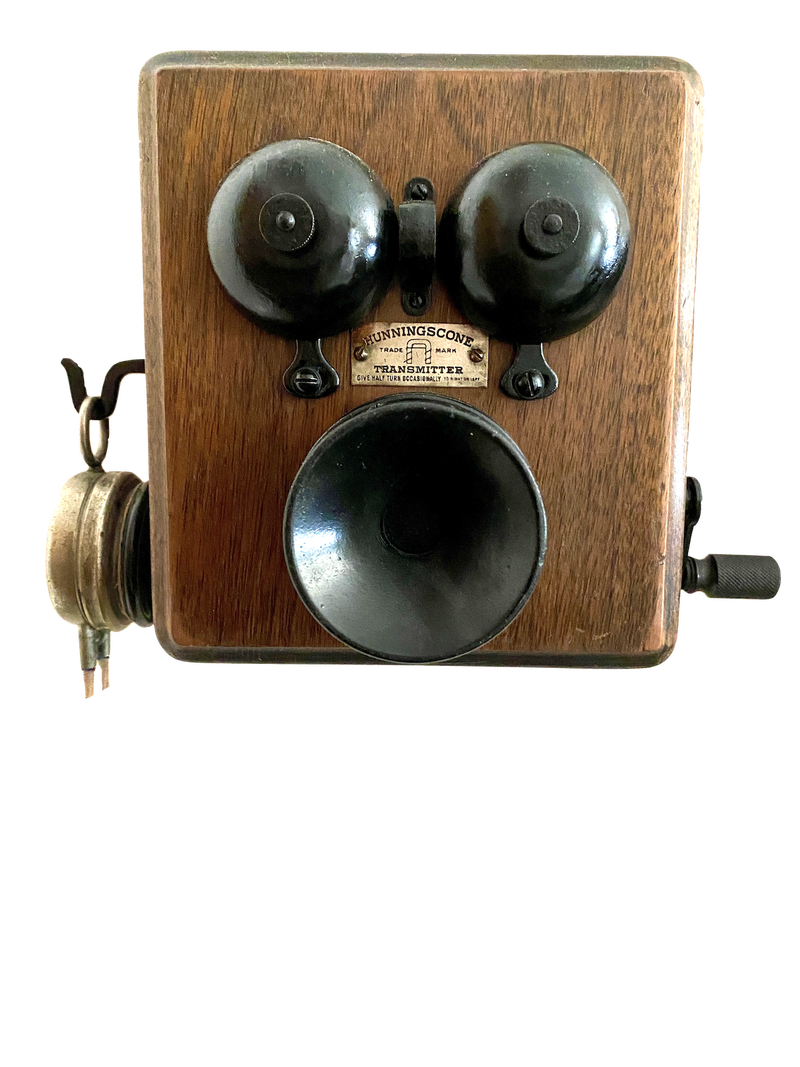HUNNINGSCONE
The early telephones used the same electromagnetic element for transmission and reception. A more sensitive transmitter was invented by the Reverend Henry Hunnings in 1878. The Hunnings microphone used loosely packed carbon granules between a thin conducting diaphragm and a metal housing. The electrical resistance between the diaphragm and the housing varies as the carbon granules move when the diaphragm vibrates.
Wilhelm Deckert of Austria devised a modification, known as the Hunningscone transmitter. Both electrodes were made of carbon. The back electrode was scored to produce a series of pyramids or cones. The cones limit the carbon granules from running downhill under gravity. Still, the transmitters can be rotated on their mounting to counteract packing. The transmitter is powered by a local 3V battery, where the voice signal is passed to the line through a transformer.
I have a few early telephones, equipped with a Hunningscone transmitter, probably made by Peel-Conner around 1900. Two of them have a magneto generator and AC bells, as they were used with manual switchboards. The third one was used in intercom systems. It uses a local 12V battery and a push button to activate the remote DC buzzer.



Create Your Own Website With JouwWeb